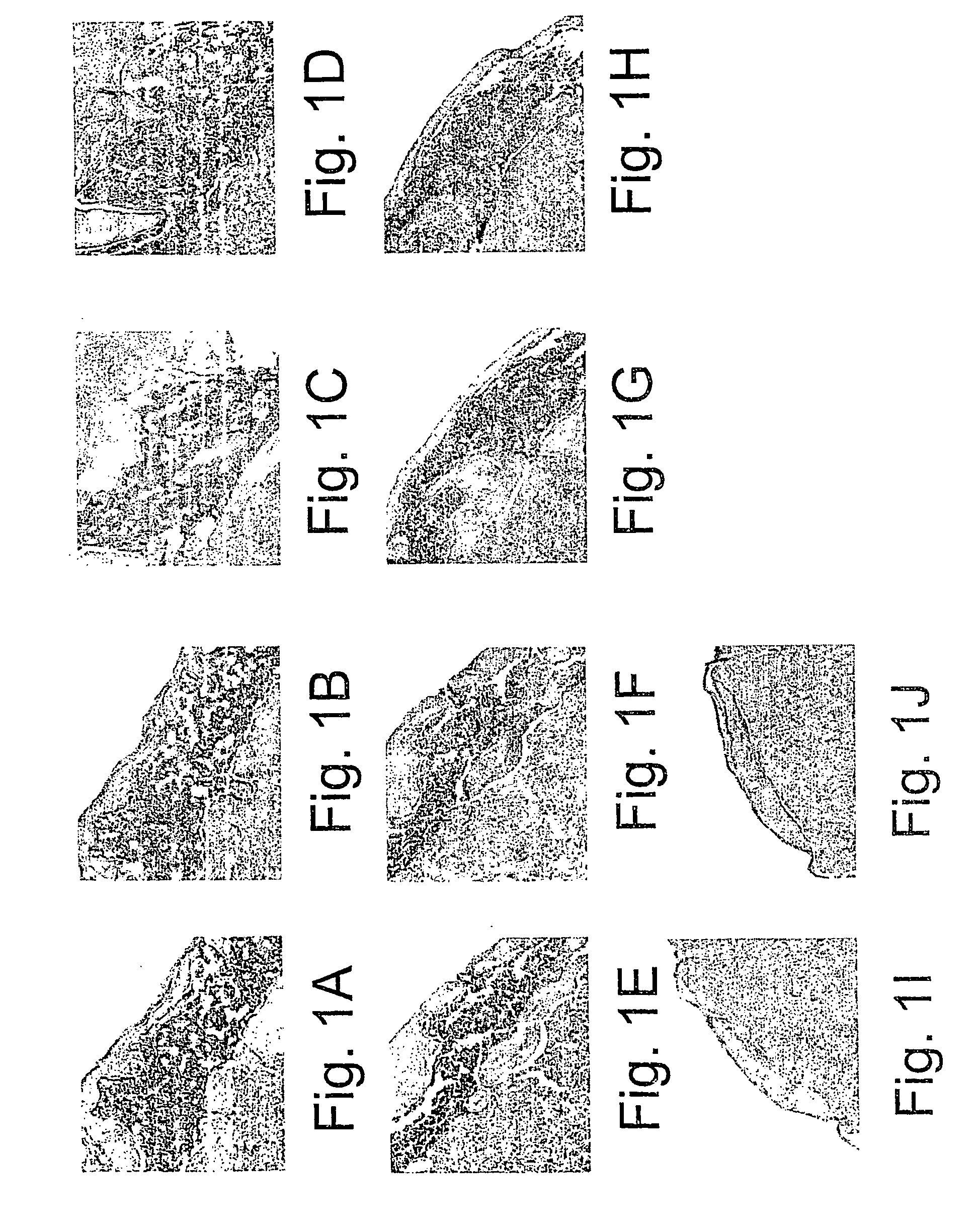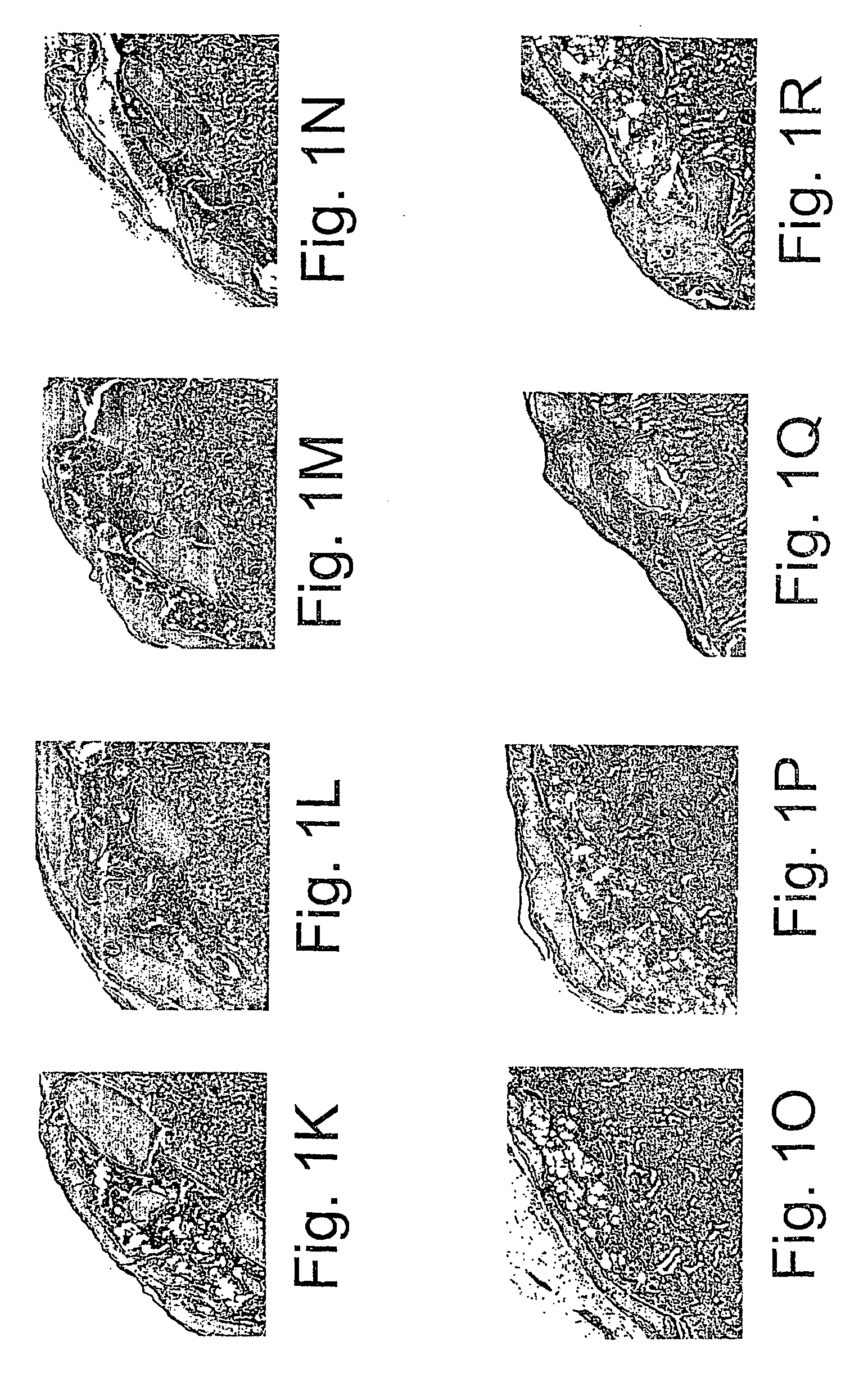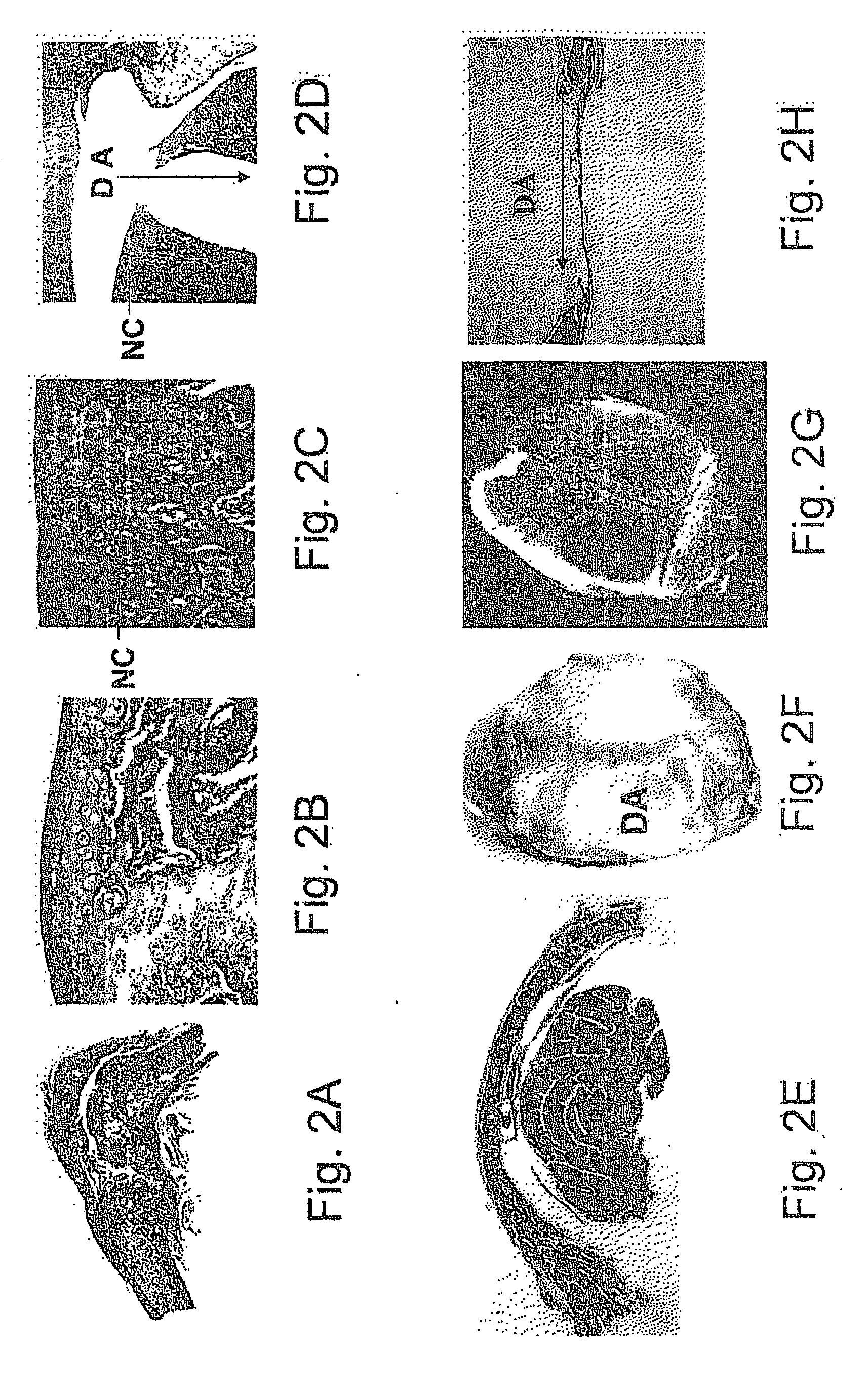Compositions comprising bone marrow cells, demineralized bone matrix and various site-reactive polymers for use in the induction of bone and cartilage formation
a technology of demineralized bone matrix and bone marrow cells, which is applied in the field of bone marrow cells, demineralized bone matrix and various site-reactive polymers for induction of can solve the problems of ineffectiveness, ineffectiveness, and inability to induce bone and cartilage formation, and achieves the effect of better impregnation
- Summary
- Abstract
- Description
- Claims
- Application Information
AI Technical Summary
Benefits of technology
Problems solved by technology
Method used
Image
Examples
example 1
Study on the Influence of Various Polymeric Materials on Osteogeneic Properties of BMC-DBM Composition Transplanted into the Sub-Capsular Space of the Kidney in Mice
[0277] In the following examples, the experimentation involved in the development of the composition of the invention. Several polymeric materials disposing high viscosity were found to be highly compatible with the process of induced bone development by mesenchymal stem cells persisting in the bone marrow (BM) transplanted together with DBM or DTM into the sub-capsular space of the kidney.
[0278] The space under the kidney capsule was selected as the site of transplantation, since it has been previously shown that it has no cells, which could be induced into osteogenesis and to build a bone, at least within the period of 2-3 months, thus being able to serve as an in vivo experimental tube for study the process of osteogenesis. [Gurevitch, O. A. et al. (1989) Hematol Transfusiol 34:43-45 (in Russian)].
[0279] In several...
example 2
Study on the Influence of Various RTG Polymeric Materials on Correction of Experimentally Created Calvarial Defect Induced by Transplantation of BMC-DBM Composition
[0286] Experiments were carried out to test whether the polymeric materials that were chosen in the previous set of experiments for their viscosity and high compatibility with the process of induced bone development by mesenchymal stem cells of BM transplanted together with DBM are able to improve the correction of the experimentally created calvarial defect.
[0287] It was shown that transplantation of composition of the invention comprised of BMC, DBM and each of the chosen RTG polymeric materials could initiate and accomplish the intramembranous development of bone, when transplanted into the experimentally created calvarial defect. The results of these experiments are shown in FIGS. 3-5. This method could then be extended to treat facial-maxillary defects.
[0288] An incision was performed in the frontal cranium region...
example 3
Study on the Influence of Various RTG Polymeric Materials on Osteogeneic Properties of BMC-DBM Composition Transplanted into the Area of Local Damage in the Articular Cartilage of the Knee Joint
[0297] Experiments were carried out to test whether the polymeric materials that were chosen in the previous set of experiments for their viscosity and high compatibility with the process of induced bone development by mesenchymal stem cells of BM transplanted together with DBM are able to improve the correction of the experimentally damaged osteochondral complex of the knee joint.
[0298] It was shown that transplantation of composition of the invention comprised of BMC, DBM and some of the chosen RTG polymeric materials could initiate and accomplish the process bone and cartilage development, when transplanted into the experimentally damaged osteochondral complex of the knee joint. The results of these experiments are shown in FIGS. 6-9. This method could then be extended to treat defects i...
PUM
| Property | Measurement | Unit |
|---|---|---|
| Mass | aaaaa | aaaaa |
| Temperature | aaaaa | aaaaa |
| Viscosity | aaaaa | aaaaa |
Abstract
Description
Claims
Application Information
 Login to View More
Login to View More - R&D
- Intellectual Property
- Life Sciences
- Materials
- Tech Scout
- Unparalleled Data Quality
- Higher Quality Content
- 60% Fewer Hallucinations
Browse by: Latest US Patents, China's latest patents, Technical Efficacy Thesaurus, Application Domain, Technology Topic, Popular Technical Reports.
© 2025 PatSnap. All rights reserved.Legal|Privacy policy|Modern Slavery Act Transparency Statement|Sitemap|About US| Contact US: help@patsnap.com



